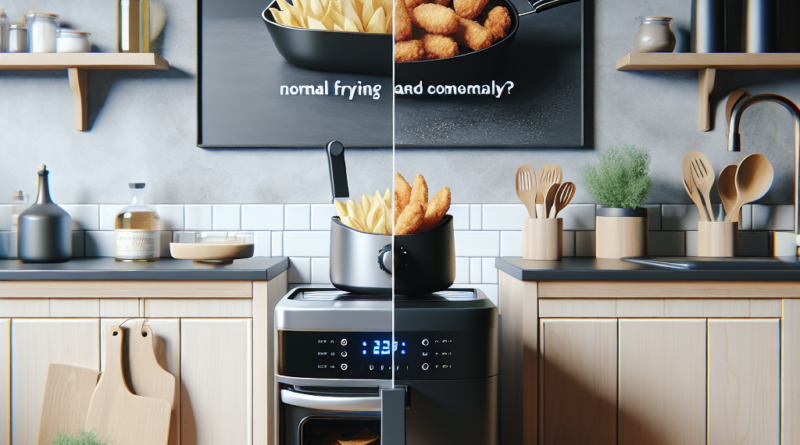Is Air Frying Really Healthier and More Cost-Effective Than Deep Frying?
Is an Air Fryer Healthier and Cheaper Than Traditional Frying?
In recent years, the air fryer has become a popular kitchen appliance for many people.
It works like a small convection oven that cooks food using hot air, reducing or eliminating the need for oil.
But is this method really healthier and more economical compared to traditional frying? Let’s analyze in detail the advantages and disadvantages of both techniques.
Economic Aspect
Air fryers tend to be more expensive if you observe the cost of the device at the initial purchase.
However, in traditional frying, oil needs to be regularly replaced to ensure optimal food quality, resulting in additional expenses.
On the other hand, an air fryer uses only a minimal amount of oil, if any, significantly reducing this cost.
Regarding energy consumption, a medium gas stove can consume between 1 to 2 cubic meters of gas per hour, with a cost ranging from 0.35 to 0.70 euros depending on the flame intensity.
An air fryer, on the other hand, has an estimated energy consumption between 1.4 and 1.6 kW/h, costing around 70 cents per hour.
An average electric fan oven consumes 0.9 kW/h, equivalent to 42 cents per hour.
It’s important to note that an air fryer functions like a fan oven but with different timing.
Compared to a traditional oil fryer, it has much shorter cooking times, approximately half.
Health Aspect
From a health perspective, the air fryer also offers some advantages.
By using little or no oil, foods prepared with this method contain fewer fats and calories compared to those fried in hot oil.
For example, an air fryer can reduce fat content by about 75-80% compared to traditional frying.
This can contribute to a more balanced diet and a reduced risk of cardiovascular diseases.
Another aspect to consider is the formation of acrylamide, a potentially carcinogenic substance that develops during the high-temperature cooking of starchy foods.
The air fryer tends to produce less acrylamide compared to traditional frying, thanks to generally lower cooking temperatures.
Preliminary studies suggest that the air fryer might better preserve certain vitamins, such as vitamin C, compared to traditional frying.
Conclusion
In conclusion, the air fryer represents a healthier alternative to traditional frying.
By reducing the use of oil, it allows for the preparation of foods with less fat and calories, contributing to a healthier diet.
However, it’s essential to consider that snacks prepared with an air fryer should be consumed without added sugars to improve crispiness; otherwise, the health benefits are reduced.
Ultimately, although neither option is perfect, the air fryer offers significant advantages, especially concerning health and weight management.
It is an ideal choice for those looking to improve their diet without giving up the pleasure of fried food.




